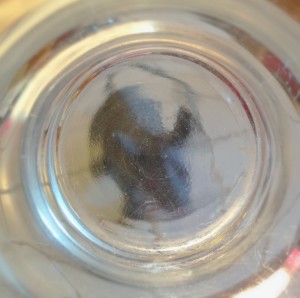Home > Soapbox > Surges, sacrificial rats and near-death
Surges, sacrificial rats and near-death
 I was surprised – and excited – to wake recently to headlines in the Washington Post and New York Times about near-death experiences. “Surge of brain activity may explain near-death experience, study says.”
I was surprised – and excited – to wake recently to headlines in the Washington Post and New York Times about near-death experiences. “Surge of brain activity may explain near-death experience, study says.”
The research showed that seconds before death the brain experiences anomalous neural activity in what may represent a heightened state of consciousness. That’s the same few seconds of the near-death experience, or NDE.
It’s important to mention upfront that the surge was observed in the scanned brains of nine sacrificial rats, not people. Scientists haven’t yet figured out how to scan the human brain at death, but this study is likely to make a few more of them take up that challenge.
Here’s a key take-away from our doomed rats: it happened in all nine rats. There’s no escaping the clarity of that finding. The surge is real. But what does it signify?
Surge of neurophysiological coherence and connectivity in the dying brain was published in PNAS by a scientific team led by Jimo Borjigin and UnCheol Lee at the University of Michigan, Ann Arbor.
The first and possibly shallowest level of significance is that the study presents a scientifically sound line of inquiry into unlocking the secrets of human consciousness stubbornly buried inside the NDE phenomenon.
Consider: If we can measure what happens to the brain at death, we could back into nascent theories that might lead to a defensible model describing the “stuff” that is human consciousness. It’s a long shot, but there’s a similar feat of scientific detection behind every Nobel.
A second reason this study stands out is because of the olive branch it offers to religion. Most people who have an NDE describe it with fervent religious vocabulary. Heaven. God. Life-after-death – the likes of which tend to bring scientific curiosity to a screeching halt. By establishing a (long overdue) scientific framework for the study of NDEs, this research is a nascent sign of what can happen when contemporary proxies for Galileo and the Pope put away outdated intellectual swordsmanship. We’re all better for it.
Third, a push to study NDEs suggests that the science collective might be easing up on its singular focus on the material world. The “if-you-can’t-measure-it-it-does-not-exist” mantra excludes many phenomena that are highly influential on human civilization. Questions about the preeminence of the materialist model are already being debated in philosophy (for an example, see Mind & Cosmos by Nagel). Is science catching up?
Or maybe this study isn’t a trend indicator about philosophy or religion or any of this stuff. Maybe it is evidence of an elegant curiosity of a single investigator. Maybe one of the mothers of one of the scientists had an NDE. Maybe scientific tools are simply becoming more refined and thus broadening that which can be measured beyond the material world.
No matter. The outcome is the same — the study of NDEs will help science hone in on the self, smooth out relations with spirituality and move beyond the limits of the physical world. That’s headline-worthy. – KM
Related to this topic:
Consciousness Fiction, or Con-FI—The birth of a new genre
The Science behind the Meta is no fiction

[…] ensure their fiction resonates with reality? They track scientific literature. Here’s a new post from author Kathleen McFall about the cultural implications of a recent University of […]